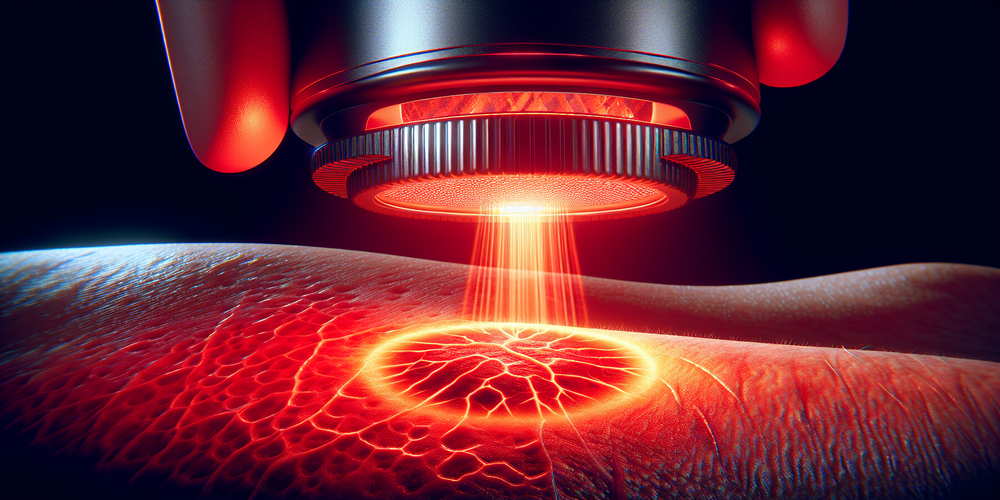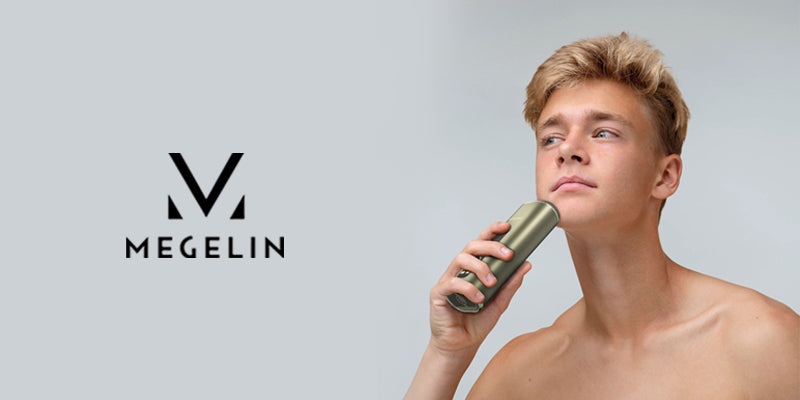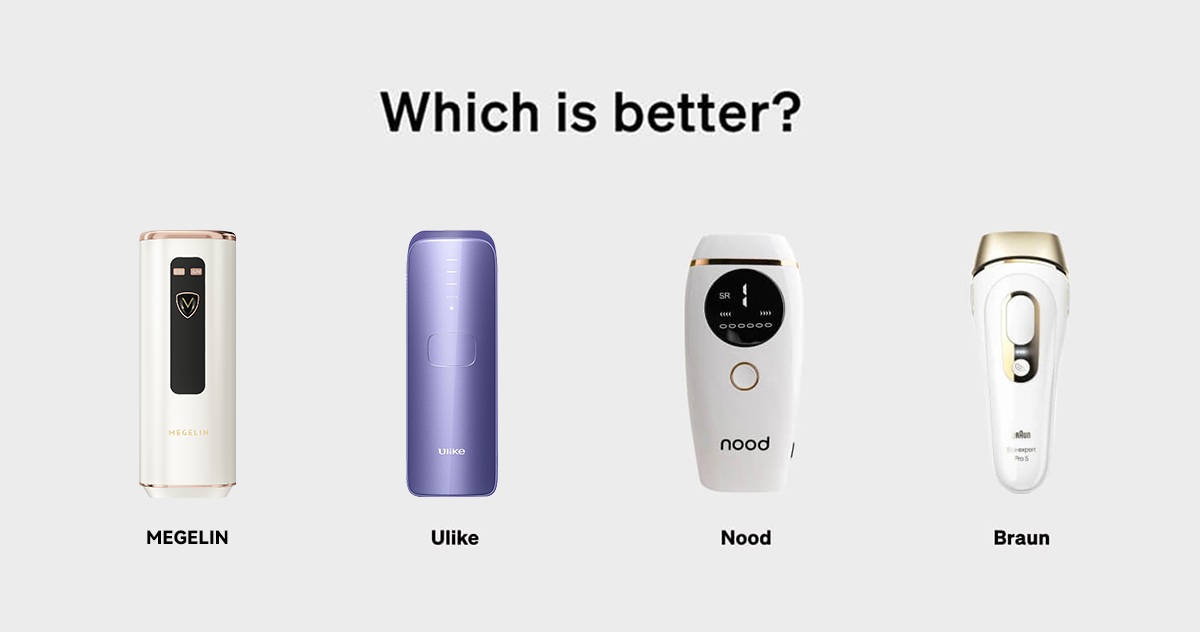
Red Light Therapy for Scars: Proven Benefits and How to Get Started
2MegelinIn the pursuit of skin rejuvenation and the quest to diminish the appearance of scars, red light therapy for scars has emerged as a significant and non-invasive treatment. This therapy uses specific wavelengths of light to promote cellular repair and tissue regeneration, addressing various types of scars including burn scars, atrophic scars, and post-surgical scars. With growing evidence supporting its efficacy, it has become a key option for those wanting to improve their skin's appearance without invasive procedures.
This article explores how red light therapy works, its effectiveness on different scars like red light therapy for stretch marks and red light therapy acne scars, and the benefits it offers for skin regeneration and aesthetics. It also provides practical tips for using red light therapy at home with LED devices and the results to expect, including red light therapy for scars before and after outcomes. Whether you're enhancing skin health or reducing scar visibility, this guide offers valuable insights for your rejuvenating journey.
How Red Light Therapy Works
The Science Behind Red Light Therapy
Red Light Therapy (RLT) operates by targeting the mitochondria within cells, often referred to as the cell's "power plant." This interaction enhances the mitochondria's ability to produce energy, thereby boosting overall cellular function. This increase in cellular energy facilitates skin repair, promotes new cell growth, and enhances skin rejuvenation [1] [2] [1] [2]. Specifically, RLT uses wavelengths of light that penetrate the skin to stimulate these cellular processes without damaging the skin's surface.
Cellular Mechanisms and Collagen Production
A pivotal aspect of Red Light Therapy is its capacity to stimulate collagen production, a crucial protein that imparts strength, elasticity, and structure to the skin. By increasing collagen synthesis, RLT not only helps in reducing the appearance of scars but also improves the overall texture and firmness of the skin [3] [2] [2]. Additionally, RLT enhances fibroblast production, which are the cells responsible for making collagen. This leads to improved skin healing and reduces signs of aging by maintaining the skin’s integrity and resilience [1] [1].
Benefits Beyond Scar Treatment
Beyond treating scars, Red Light Therapy offers extensive benefits to overall skin health. It increases blood circulation to tissues, which brings more nutrients and oxygen to the skin cells, speeding up the healing process. This enhanced circulation also aids in the efficient removal of waste products from skin tissues. Furthermore, RLT reduces inflammation in the cells, which is particularly beneficial in treating conditions like acne scars, burn scars, and stretch marks [1] [2] [1]. The therapy’s ability to activate biological pathways in skin cells supports the release of growth factors and cytokines, essential for cellular communication and healing, thereby accelerating skin recovery and health improvement on a molecular level [2] [2].
Types of Scars Treated by Red Light Therapy
Keloid Scars
Keloid scars, characterized by their raised nature and expansion beyond the initial wound, result from an excessive collagen production during the healing process. Red light therapy (RLT) has been found effective in reducing the size of these scars and alleviating associated hyperpigmentation. The therapy penetrates skin layers, stimulating cellular repair and easing the pain by reducing inflammation, thus making daily life more comfortable for those affected [4] [5] [3].
Hypertrophic Scars
Unlike keloid scars, hypertrophic scars do not grow beyond the original injury site and are commonly found after surgeries or accidental injuries. These scars are itchy and red, often causing discomfort. RLT helps in softening their appearance and texture by increasing blood flow and reducing inflammation, which in turn aids in fading these scars more rapidly [4] [5] [3].
Atrophic Scars
Atrophic scars are the opposite of hypertrophic and keloid scars; they are sunken and typically result from acne or chickenpox. Red light therapy is particularly effective for these types of scars as it boosts collagen production, which raises the sunken scar closer to the skin's surface level, thus smoothing the skin's appearance [4] [5] [3].
Post-Surgical Scars
Surgical procedures can leave behind scars that may take a while to fade and can sometimes be quite prominent. Red light therapy can be a beneficial addition to post-operative care, speeding up the healing process and reducing the likelihood of heavy scarring. This method is especially advantageous post-surgery as it aids in quicker recovery and reduces post-operative discomfort [4] [5] [3].
Benefits of Red Light Therapy for Scarring
Reduction in Inflammation and Pain
Red light therapy is renowned for its ability to significantly reduce inflammation, which is a common issue post-injury or surgery. This reduction in inflammation is crucial as it not only alleviates pain but also accelerates the healing process [6] [6]. The therapy's ability to decrease the proliferation of skin fibroblasts and collagen production at the site of scar tissue further aids in minimizing discomfort and improving scar appearance [7].
Improved Skin Texture and Elasticity
One of the standout benefits of red light therapy is its effect on skin texture and elasticity. By stimulating collagen and elastin production, the therapy enhances the structural integrity of the skin, making it firmer and more elastic [8]. This is particularly beneficial for aging skin, which tends to lose its elasticity over time. Clinical trials have shown that red light therapy can lead to significant improvements in skin texture, including a reduction in the appearance of fine lines and wrinkles [8] [9].
Enhanced Healing and Reduced Discoloration
Red light therapy promotes faster tissue repair and cellular regeneration, which are essential for healing damaged skin and reducing the visibility of scars, including those from burns and surgery [6] [6]. Additionally, the therapy helps in fading discoloration and evening out skin tone by improving blood circulation and reducing hyperpigmentation associated with scar tissue [3] [3]. This leads to a more uniform skin appearance and less noticeable scarring.
Tips for Effective Use of Red Light Therapy
Consistency and Duration of Treatments
For those seeking to maximize the benefits of Red Light Therapy (RLT) for scar treatment, maintaining a consistent treatment schedule is crucial. It is generally recommended to undergo RLT sessions for about 15-20 minutes at least three times a week [10] [11]. This regular exposure is key, as the therapeutic effects of RLT accumulate over time, contributing to the gradual improvement of scar tissue and overall skin rejuvenation [3].
Proper Usage Techniques and Device Selection
To begin a session, one should start by cleaning the scarred area before exposure to red light. Positioning the red light face wand or facial wand approximately 6 inches from the skin ensures optimal light penetration. It is important to keep the wand stationary during the session and to wear safety glasses to protect the eyes [10]. Different devices may have varying recommendations for distance from the skin, duration, and frequency of use, so understanding how to use your specific device correctly is essential for effective results [3].
Consulting with a Healthcare Professional
Before starting any treatment regimen with RLT, it is advisable to consult with a healthcare professional. This step is particularly important if considering combining RLT with other treatments, such as blue light therapy for acne [10]. A dermatologist can provide tailored advice based on an individual's unique skin characteristics and the type of scars, ensuring that the treatment is both effective and safe [3]. They can help develop a clear, personalized plan that accounts for any potential side effects and maximizes the benefits of the therapy [1].
Conclusion
Throughout the exploration of red light therapy (RLT) for scars, we've unveiled its remarkable capacity for enhancing skin regeneration and reducing the appearance of various types of scars, including burn scars, atrophic scars, post-surgical scars, and even stretch marks. By delving into the science behind red light therapy, we understand its influence on cellular repair, collagen production, and overall skin rejuvenation. These insights not only underscore the effectiveness of RLT in improving skin texture and appearance but also highlight the broader benefits of this non-invasive treatment approach, which extends beyond scar treatment to encompass overall skin health and the mitigation of age-related changes.
As we consider the journey towards smoother, more radiant skin, it's evident that red light therapy emerges as a formidable ally. The practical tips provided for effective use, coupled with the emphasis on consistent treatment schedules and proper device usage, equip individuals with the knowledge needed to embark on this therapeutic endeavor. While the exploration of RLT's benefits concludes here, the door to further research and personal experimentations with this promising treatment remains open, offering a beacon of hope for those seeking to repair and enhance their skin's appearance without resorting to invasive procedures.
FAQs
Can red light therapy eliminate scars?
Red light therapy (RLT) is a treatment that utilizes low levels of red light and is known to enhance the appearance of your skin by diminishing wrinkles, scars, redness, and acne.
What are the steps to maximize the effectiveness of red light therapy?
To achieve the best results from red light therapy, follow these eight steps:
- Set realistic expectations.
- Maintain consistency with your appointments.
- Schedule your appointments wisely.
- Stay hydrated by drinking water.
- Be mindful of the timing of your sessions.
- Avoid physical therapy or exercise before your sessions.
- Reduce carbohydrate intake.
- Refrain from consuming alcohol.
What is the recommended duration for initial red light therapy sessions?
For beginners, it is recommended to start with sessions lasting 5-10 minutes. Gradually increase to 10-minute sessions over 2-3 weeks as your body adjusts to the therapy. Optimal treatment time for each area is 10 minutes, at a distance of 6 inches from the device.
What are the scientifically supported benefits of red light therapy?
Studies indicate that red light therapy can smooth skin and reduce wrinkles by stimulating collagen production, which enhances skin elasticity. It is also shown to improve signs of sun damage and can be effective in treating acne.
References
[1] - https://my.clevelandclinic.org/health/articles/22114-red-light-therapy
[2] - https://www.solawave.co/blogs/red-light-therapy/the-role-of-red-light-therapy-in-minimizing-scars-stretch-marks
[3] - https://www.solawave.co/blogs/red-light-therapy/the-different-types-of-scars-improved-by-red-light-therapy
[4] - https://www.ncbi.nlm.nih.gov/pmc/articles/PMC7328485/
[5] - https://platinumtherapylights.com/blogs/news/red-light-therapy-for-scars
[6] - https://www.degreewellness.com/2020/05/red-light-therapy-for-healing-injuries-wounds-scars-and-burns/
[7] - https://www.ncbi.nlm.nih.gov/pmc/articles/PMC8919713/
[8] - https://skinimpactled.com/blogs/articles/how-red-light-therapy-improves-skin-elasticity
[9] - https://lightlounge.life/red-light-therapy/aesthetics/improve-skin-texture
[10] - https://www.solawave.co/blogs/scars/using-red-light-therapy-on-scars-a-step-by-step-guide
[11] - https://www.blockbluelight.com/blogs/news/red-light-therapy-at-home-guide










